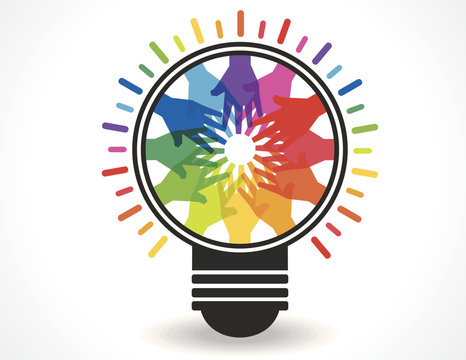
I’ve often wondered the difference between creativity and innovation, but I’ve never looked it up till now. Merriam-Webster dictionary tells me the following:
- Creativity is the ability to make new things or think of new ideas
- Innovation is the act or process of introducing new ideas, devices or methods
Both seem to emphasise “new”. The difference being that creativity is about the ability and innovation is about the process.
Before I continue sharing my thoughts, I would like to clarify a popular myth that creativity belongs in the right half of the brain. Science backs up the fact that creativity is actually a whole brain activity.
So, what about Innovation?
Now that we have that cleared up, let’s talk about innovation. The trouble with innovation is that it often involves more than one person. It’s almost like a team sport where people with different positions, talents and knowledge come together in a bid to succeed. In light of this, if innovation is left to just one person, or one leader to decide on the approach or the rules of the game, success may be hard to attain. We need to play together, as a team.
What then, are the rules?
A simple google search revealed many different innovation frameworks, models and principles. I trust that many of them would work really well, but I am going to focus on a common thread among these many searches:
“First Diverge, Then Converge”
This resonates with what we often espouse at Emergenetics – to be a successful innovator, you need to use both hemispheres of your brain, or in our language, all your preferences! We even have a term for this – the Whole Emergenetics approach (WEapproach)!
How?
This website provides quite a good framework with action principles for both divergence and convergence but taking a larger view of things, I’d like to suggest the following:
- If you are putting together a team to innovate, consider putting together a team of people with different thinking and behavioural preferences. This maximises the cognitive diversity that you get within the team which inadvertently allows you to have a more natural inclination towards both divergence and convergence.
- Set up processes and methods that are friendly to everyone, and not just to some. Brainstorming, for example, is often more appealing to people who are gregarious and driven. The ones who prefer quiet interactions and introspection may have great ideas but find it hard to voice them. In the end, the team loses. What we can do is to ensure that when the team shares or brainstorms, the method used is friendly to the reticent ones too. Choose brainwriting, instead of brainstorming!
Final thoughts
Taking any holistic approach often takes time, practice and trust. Trust that the whole – when it bears fruit – will be more than merely the sum of its parts. Individually, we each bring unique gifts that are creative on their own and at times may seemingly conflict with the gifts that others bring.
However, if we allow ourselves to be aware of our strengths (and blind spots) and that of our teammates, and embrace the unique diversity that we have, then harnessing the outcomes of holistic innovation would be something quite easily attainable, and fulfilling.
“The heart and soul of the company is creativity and innovation.”
– Bob Iger, Chairman and CEO of The Walt Disney Company
 Print This Post
Print This Post
